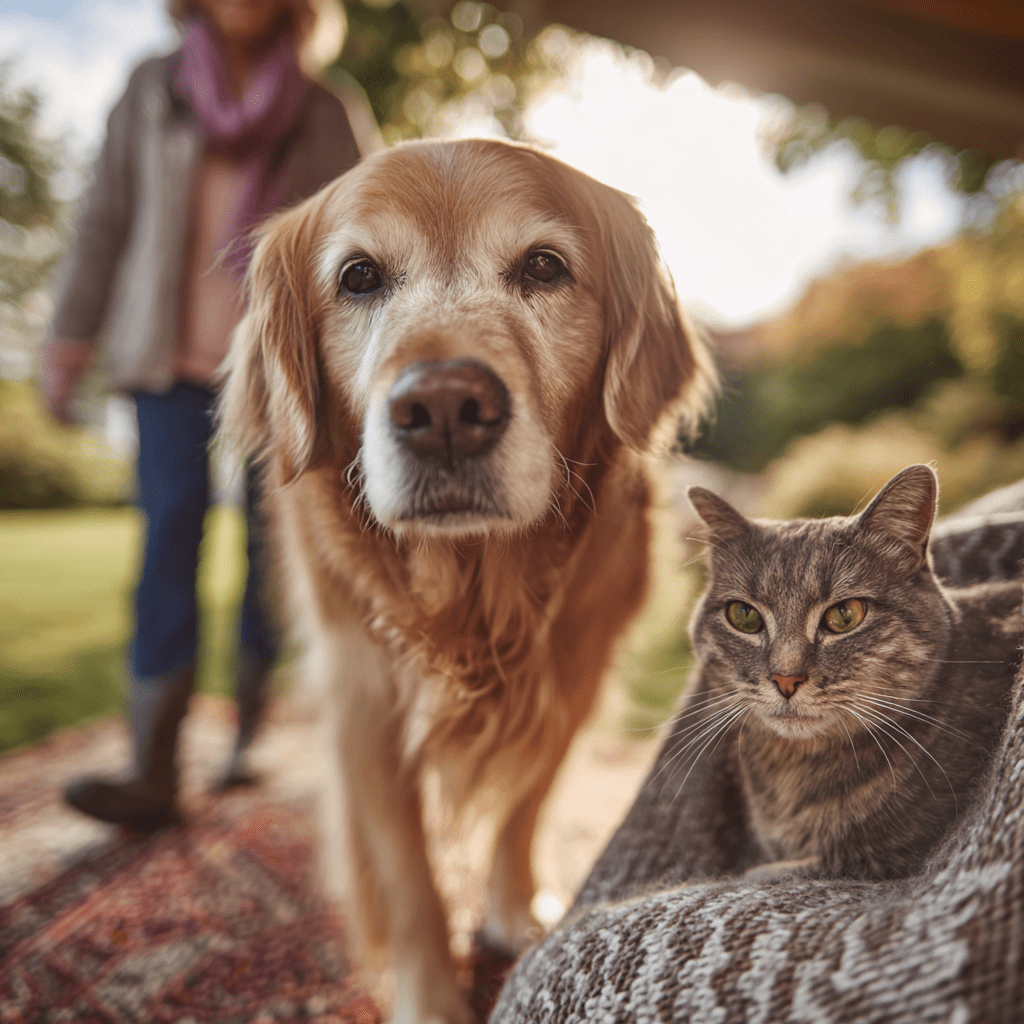Introduction: Growing Old Together
Watching your beloved pet grow older is a bittersweet journey. The playful puppy or curious kitten who once had endless energy eventually slows down, preferring naps to zoomies. But aging doesn’t mean your dog or cat can’t enjoy a happy, fulfilling, and active life.
With the right care, adjustments, and attention, you can help your senior pet thrive well into their golden years. This guide explores how to recognize when your pet is entering their senior stage, the challenges older pets face, and practical ways to keep them healthy and active.
When Is a Pet Considered “Senior”?
- Dogs: Small breeds may be considered senior around age 10–12, while large breeds reach senior status closer to 6–7 years.
- Cats: Most cats are considered senior by age 10, with many living into their late teens.
Every pet is different, but generally by midlife, you’ll notice changes in energy, metabolism, and health.
Common Health Challenges in Senior Pets
- Arthritis and Joint Pain
- Stiffness, limping, or reluctance to climb stairs.
- Dental Problems
- Tooth decay, gum disease, and oral pain.
- Weight Changes
- Some pets gain weight due to slower metabolism, while others lose weight due to illness.
- Vision and Hearing Loss
- Cloudy eyes, bumping into furniture, or not responding to calls.
- Cognitive Decline
- Senior dogs and cats may develop confusion, disorientation, or changes in sleep cycles.
- Organ Function Decline
- Kidney, liver, or heart issues become more common.
Understanding these challenges helps you anticipate your pet’s needs.
Nutrition for Senior Pets
Adjusted Diets
- Senior pets often require fewer calories to prevent weight gain.
- High-quality protein supports muscle maintenance.
- Added fiber improves digestion.
Supplements
- Glucosamine and chondroitin: Support joint health.
- Omega-3 fatty acids: Reduce inflammation and support brain health.
- Antioxidants: Help fight age-related cell damage.
Hydration
Older pets may drink less, leading to dehydration. Encourage water intake with:
- Multiple water bowls around the house.
- Adding water or broth to food.
- Cat fountains to encourage drinking.
Exercise for Senior Pets

Low-Impact Activities
- Short, gentle walks for dogs.
- Play sessions with soft toys for cats.
- Swimming for dogs with arthritis (if they enjoy water).
Consistency Over Intensity
- Daily movement is better than occasional strenuous exercise.
- Avoid long hikes or intense running that may stress joints.
Mental Exercise
- Puzzle feeders, treat-dispensing toys, or training sessions.
- Cats benefit from climbing trees, scratching posts, and laser pointer play (in moderation).
Veterinary Care for Senior Pets
Regular Checkups
- Bi-annual vet visits instead of once a year.
- Bloodwork and urine tests to detect early organ issues.
Dental Exams
- Professional cleanings as needed.
- Home care with brushing or dental chews.
Preventive Care
- Keep up with vaccinations and parasite prevention.
- Monitor for new lumps, bumps, or skin changes.
Home Adjustments for Comfort
- Soft Bedding
- Orthopedic beds for joint support.
- Mobility Aids
- Ramps or steps for getting on furniture or into cars.
- Non-Slip Flooring
- Rugs or mats to prevent slips on hardwood floors.
- Accessible Litter Boxes (for cats)
- Low-entry boxes for easy access.
Monitoring Behavior Changes
Senior pets may develop subtle changes that signal health issues:
- Increased thirst → possible kidney disease or diabetes.
- Restlessness at night → possible cognitive decline.
- Sudden aggression → possible pain or vision loss.
Early detection gives your pet the best chance of treatment and comfort.
Real-Life Story: Daisy the Senior Cat
Daisy, a 12-year-old tabby, began losing weight and spending more time alone. Her owner thought it was just “old age,” but a vet visit revealed hyperthyroidism. With medication and a specialized diet, Daisy regained her energy and now enjoys her golden years curled up by the window, watching birds.
This shows that regular vet visits and attentiveness can dramatically improve a senior pet’s quality of life.
The Emotional Side of Senior Pet Care
Caring for an aging pet is as much emotional as it is practical. Watching them slow down can be hard, but it’s also a time to deepen your bond. Senior pets often crave affection, comfort, and gentle companionship more than ever.
Cherish the little moments: the slow walks, the quiet cuddles, and the soft purrs or tail wags.
End-of-Life Considerations
While difficult to think about, planning ahead ensures dignity and comfort for your pet. Palliative care, pain management, and quality-of-life assessments help make compassionate decisions when the time comes.
Conclusion: Golden Years Can Be Bright Years
Your senior pet may move a little slower, but with proper diet, exercise, veterinary care, and lots of love, they can enjoy their golden years with comfort and happiness.
The key is paying attention to their changing needs and adapting your care routines. After all, the gift of companionship they’ve given you deserves to be honored with the best care in return.
